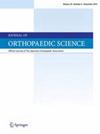用于评估小儿脊柱侧弯病例骨骼成熟度的 Risser+ 等级的可靠性:使用站立和仰卧全脊柱X光片进行研究
IF 1.5
4区 医学
Q3 ORTHOPEDICS
引用次数: 0
摘要
背景尽管临床医生可以使用多种基于射线摄影的系统来评估骨骼的成熟度,但经典的里瑟分级系统仍然是临床的金标准。在脊柱侧弯的随访中,通常使用立位全脊柱X光片。然而,在临床实践中,我们偶尔会遇到这样的病例,即髂嵴骨化在站立和仰卧全脊柱X光片上的表现不同。本研究招募了各种类型的脊柱侧凸患者,他们均接受过站立位和仰卧位的X光检查。我们对连续拍摄的站立位和仰卧位全脊柱X光片的Risser+等级进行了回顾性评估。结果我们评估了 111 名患者(年龄:12.6 ± 2.0;男女比例 = 23:88)。站立和仰卧 Risser+ 分级系统的 Kappa 值为 0.74。结论总体而言,站立位和仰卧位X光片的Risser+分级之间有很大的一致性。但是,在将 Risser+ 评为 2 级或 3 级的站立位和仰卧位 X 光片之间存在分歧。因此,我们发现髂骨干骺端骨化的可见度因姿势不同而有很大差异,仅使用 Risser+ 等级来评估骨成熟度存在局限性。临床医生除了使用 Risser+ 系统外,还应该使用其他评估系统,以获得更准确的骨成熟度评估,尤其是对于站立位放射照片的 Risser 分级为 2 或 3 级的病例。本文章由计算机程序翻译,如有差异,请以英文原文为准。
Reliability of the Risser+ grade for assessment of bone maturity in pediatric scoliosis cases: Investigation using standing and supine whole-spine radiograph
Background
Although several radiography-based systems for assessing skeletal maturity are available to clinicians, the classical Risser grading system remains a clinical gold standard. For scoliosis follow-up, a standing whole-spine radiograph is usually used. However, in our clinical practice, we have occasionally encountered cases in which ossification of the iliac crest is seen differently in the standing and supine whole-spine radiography. Here, we aimed to clarify the reliability of the Risser+ grading system for supine versus standing position radiographs.
Methods
This study recruited patients with all types of scoliosis who had been radiographed in both the standing and supine positions. We retrospectively evaluated the Risser+ grade of standing and supine whole-spine radiographs taken consecutively. Kappa statistics were computed to investigate the agreement between standing and supine Risser+ grades for this study.
Results
We evaluated 111 patients (age: 12.6 ± 2.0; male-to-female = 23:88). The Kappa value for the standing and supine Risser+ grade systems was 0.74. The degree of agreement between the two positions for each Risser+ grade revealed high agreement for grades 0 and 5 in all cases, whereas grades 2 and 3 had low agreement.
Conclusions
Overall, there was substantial agreement between the Risser+ grades assigned to standing and supine position radiographs. However, disagreement was observed between standing and supine position radiographs assigned Risser+ grades of 2 or 3. Therefore, we have found a wide range in the visibility of iliac apophysis ossification of the iliac depending on the posture, and there are limitations in assessing bone maturity using the Risser+ grade alone. Clinicians should use other evaluation systems, in addition to the Risser+ system, to achieve a more accurate bone maturity assessment, especially for cases with standing position radiographs assigned Risser grades of 2 or 3.
求助全文
通过发布文献求助,成功后即可免费获取论文全文。
去求助
来源期刊

Journal of Orthopaedic Science
医学-整形外科
CiteScore
3.00
自引率
0.00%
发文量
290
审稿时长
90 days
期刊介绍:
The Journal of Orthopaedic Science is the official peer-reviewed journal of the Japanese Orthopaedic Association. The journal publishes the latest researches and topical debates in all fields of clinical and experimental orthopaedics, including musculoskeletal medicine, sports medicine, locomotive syndrome, trauma, paediatrics, oncology and biomaterials, as well as basic researches.
 求助内容:
求助内容: 应助结果提醒方式:
应助结果提醒方式:


